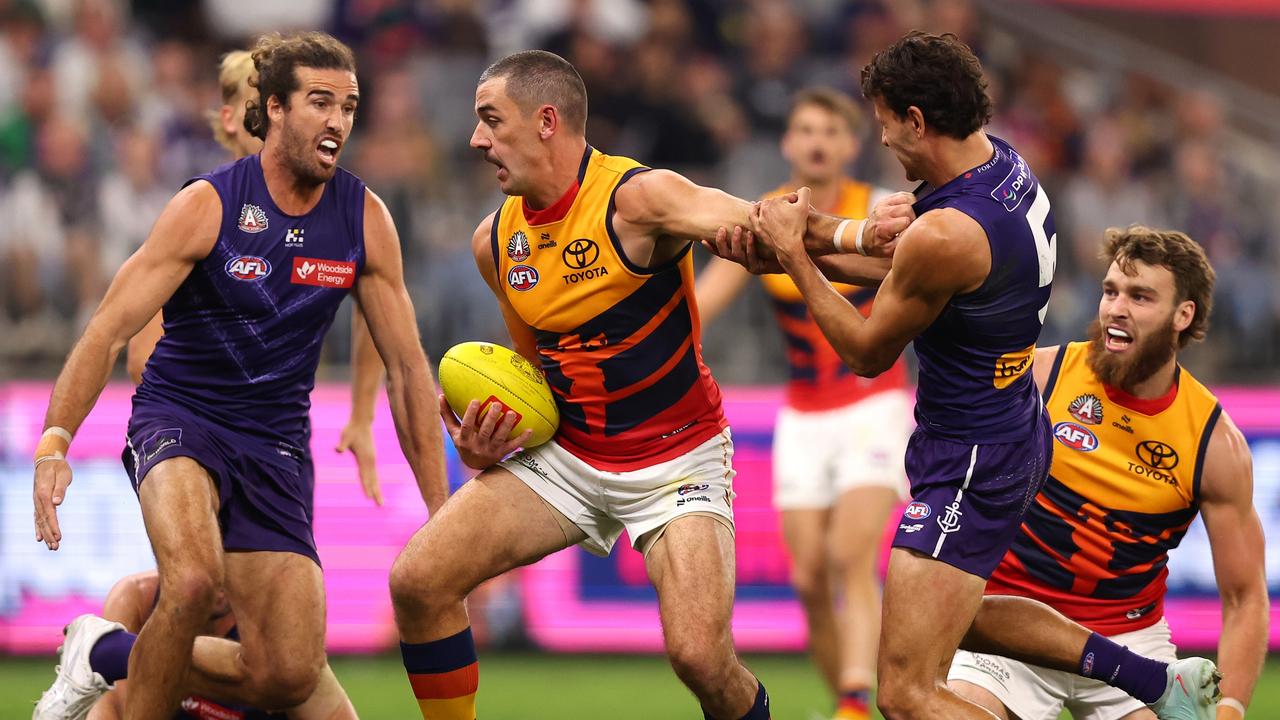VFL clubs Coburg, Northern Bullants and Frankston Dolphins barely standing against gambling revenue
A screenshot pinged around the football community earlier this month that would have saddened plenty of local fans. Here’s the staggering numbers behind why the VFL has a problem.
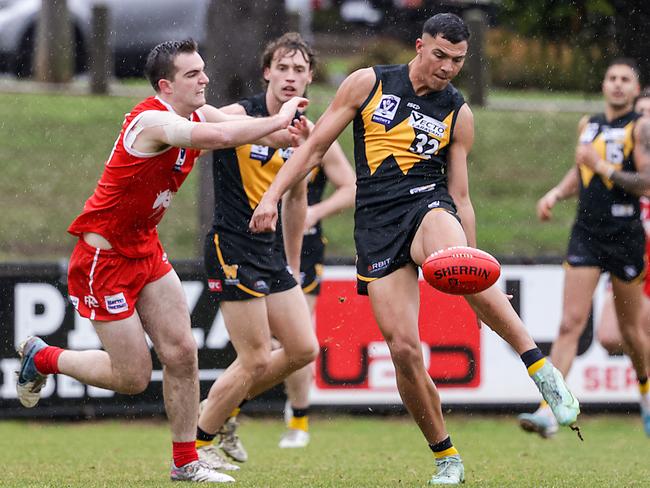
AFL
Don't miss out on the headlines from AFL. Followed categories will be added to My News.
Hearts sank as a screenshot of the VFL app showing live scores pinged around the football community earlier this month.
At quarter-time Frankston trailed Gold Coast 0.1 (1) to 10.1 (61) and Northern Bullants trailed Brisbane Lions 0.0 (0) to 8.6 (54), while at halftime Coburg trailed Carlton 1.1 (7) to 9.10 (64).
After four quarters it was obvious that three proud clubs steeped in Victorian Football Association history were on their knees.
Coburg, Northern Bullants and Frankston Dolphins are 3-34 against the other 18 VFL teams this season.
They are the stand-alone clubs who are barely standing.

But the main game is being played off the ground.
Problem gamblers are powering the other four stand-alone clubs – Werribee, Williamstown, Port Melbourne and Southport Sharks – to prosperity in a VFL world with minimal equalisation.
Next year they will be enriched by almost 600 pokies machines.
They are the stand-alone clubs on stilts.
Southport – which made last year’s grand final – is the Las Vegas of Australian sport and Werribee – on an 11-game winning streak – is becoming the Atlantic City.
Port Melbourne’s No.1 ticket holder is billionaire pokies king Bruce Mathieson and last year the club posted an eye-watering profit of $2,246,131.
Frankston’s profit last year was $1033 – the equivalent of one match payment to a star player.
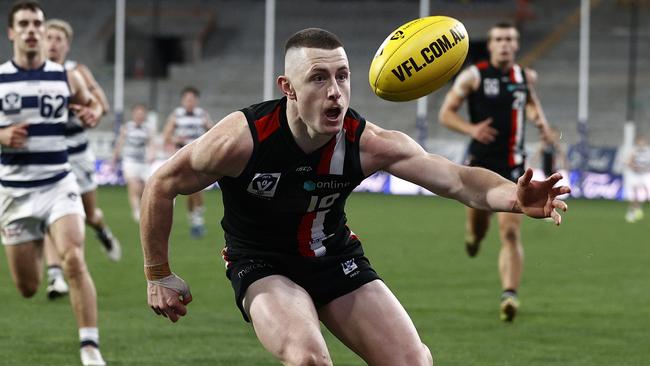
The Dolphins’ main source of non-traditional income has been the Frankston Community Market.
But stalls on a Sunday morning cannot compete with the rivers of gold flowing 9am-5am everyday from Werribee’s first pokies den.
The Tiger Clubhouse’s 85 poker machines in Hoppers Crossing have generated close to $18 million in the past 18 months.
Werribee president Martin Carter described his club’s facilities as “superior to all clubs outside of the AFL”.
The Tigers will slot in another 70 poker machines when Club Tarneit opens its doors in Truganina next year.
They will gobble around $9 million in the first 12 months, according to an expenditure report from ShineWing Australia director Tim Stillwell.
Carter claimed Club Tarneit would be a “much-needed additional revenue stream”.
Goodness help Coburg, Frankston and the Bullants if that is the case.
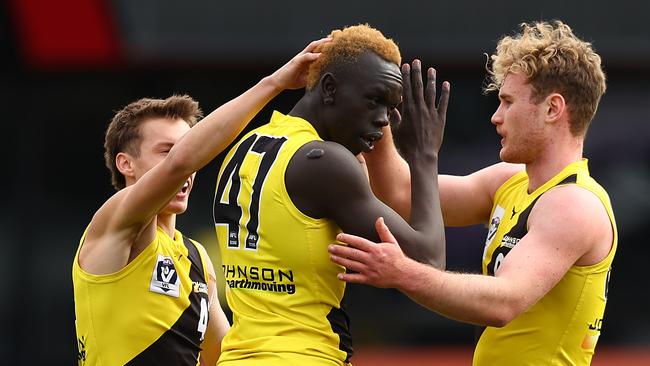
In 2020 the pandemic pulled the plug on pokies — leaving Werribee and Williamstown seven figures in the red.
But their bottom lines improved by a combined $3.8 million in 2021 as Covid calmed (Werribee’s profit was $429,258, Williamstown’s $515,650).
Last year Werribee celebrated its 17th profit in 20 seasons — and it set a club record. But the figure was absent from the club’s 23-page annual report.
Perhaps embarrassed by its riches, the club again chose not reveal it when asked this week.
Dolphins treasurer James van Beek hit out at the stand-alone “imbalance”.
“Southport, Port Melbourne, Werribee and Williamstown all have gaming venues driving additional non-football revenues and providing a financial advantage to attract ex-AFL players and coaches and funding more administrative resources,” van Beek told Frankston’s annual general meeting.
“It is evident there is a direct correlation between winning and financial performance.
“Frankston, Coburg and Northern Bullants are disadvantaged, although being socially responsible, making it difficult to strive for and become financially sustainable and, by extension, competitive on-field.”
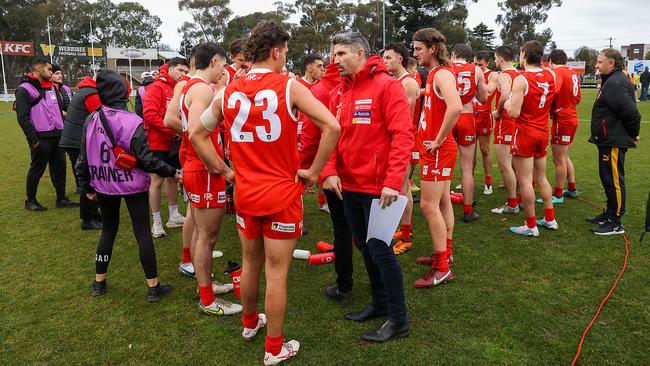
Coburg and Northern can only afford one full-time employee … and Coburg chief executive Sebastian Spagnuolo left last month. He has not been replaced.
Comparatively, the pokie powerhouses are playing with house money.
Werribee coach Michael Barlow credited three high-performance staff for their player availability being the envy of the league.
Barlow is full-time and supported by a string of part-timers. This masthead has been told Werribee has eight full-timers, but club boss Mark Penaluna insisted it was five.
Coburg’s 2020-24 strategic plan aimed to “be in a position of offering full-time terms to our senior coach”.
Entering 2023 that had not happened and so Andrew Sturgess quit to coach Calder Cannons, where Spagnuolo lobbed last week.
“The opportunity to go full-time and support my family was a no-brainer,” Sturgess said.
For years Coburg would pay just 25 per cent of the salary cap ($100,000 out of $400,000).
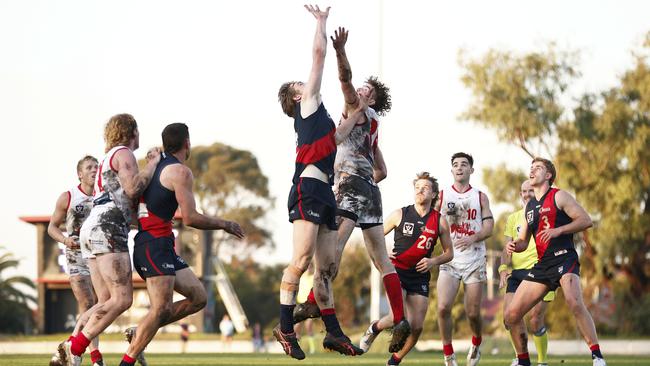
“You’d lay awake at night knowing we need to have $14,000 in the account for payroll to be able to pay the players for the last month, and we’ve only got $8000,” ex-Coburg general manager Craig Lees said.
“How the hell are we going to pay the players? You lose sleep. This is the stand-alone non-pokies environment.”
This year’s salary cap is $250,000 (up from $220,000) for stand-alone clubs and $125,000 for AFL and aligned clubs (up from $110,000).
One VFL coach said players were grossly underpaid. He questioned how a player close to making an AFL list could be on $4000-5000.
“We’ve got plenty of players on $250 a game that could be on $1000-1200 at local level, and then you’re asking them to play on a Thursday interstate and to take Wednesday, Thursday and potentially Friday off work which might cost them $500-600,” he said.
“You can’t keep paying the players that are a bee’s dick off being AFL level peanuts because it doesn’t help the brand moving forward.”
The threat of cashed-up local clubs poaching VFL talent is listed as a threat in Coburg and Williamstown’s strategic plans.
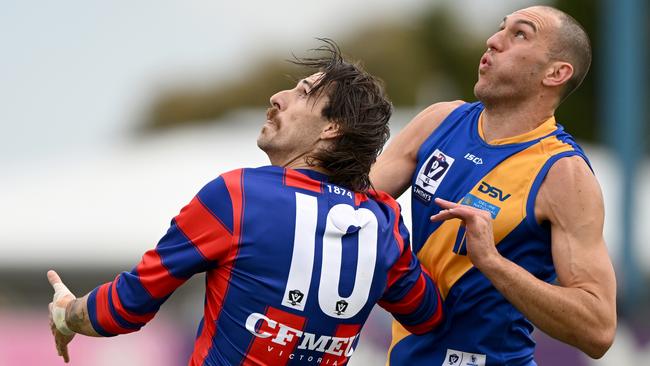
In 2015 Tasmanian Robbie Fox was torn between playing EDFL for Aberfeldie ($400 per game) or VFL for Coburg ($150 per game, $50 development league).
Fast cash understandably tempted the university student – but he signed at Coburg and then got drafted by Sydney.
Phew.
But how many young guns in Fox’s shoes have chosen dollars over AFL dreams?
The AFL said it adjusted the salary cap “to assist clubs in retaining and attracting VFL-listed talent and help to facilitate competitive balance across the competition”.
But a bigger cap only means more money for players and a fairer competition if clubs can afford it.
“We’re certainly not paying that much, but those with gaming revenues would be,” Bullants president Whitlam Malkoun said.
“Clubs with money want to increase it, clubs without money say take $50,000 off it. It’s an unfair domination whichever way you look at it.”
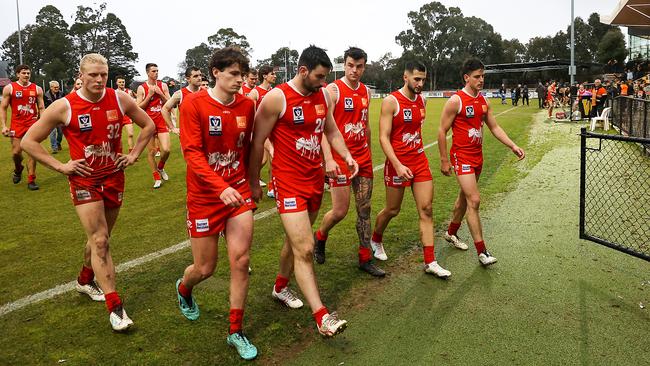
You could not expect to pay 25 per cent of the cap and contend for a premiership.
So what exactly is the purpose of the VFL?
Is it to get 21-22-year-olds drafted? To service AFL clubs so reserves players get match simulation?
Or is it a bona fide second-tier state-league encompassing Australia? Talk and Port Adelaide’s reserves could jump from the SANFL is incorrect.
The AFL said the VFL was the “highest standard of state-league football” and there were no plans to change the model.
Malkoun said: “Let’s remember what we are – a development league”.
The Bullants developed mid-season draftee Brandon Ryan (Hawthorn) while their recent coaches Josh Fraser (Collingwood) and Ben Hart (GWS) scored AFL jobs.
Last Saturday Malkoun dashed between Cramer St and Bunnings in Epping to run a community barbecue.
“We wouldn’t raise that much money on game day against Brisbane because the crowd won’t come, and so you’ve got to find that shortfall,” he said.
“Bunnings offered us a spot and if we can raise a couple of grand out of that, well, that’s a couple of grand we didn’t have.”
Malkoun volunteers 30 hours a week.
Impecunious clubs operate on love, sweat and tears. In the absence of pokies it is the tender they count on.
Coburg and Bullants’ sole full-timers are general managers in every sense.
Lees used to be on site at 6am, handle canteen orders, count the cash and put the bins out on matchday.
“Craig on most occasions was doing the work of three people, and his efforts should never be underestimated,” ex-Coburg president Kevin Breen said.
At home games Lees would cheer for Coburg and the sun.
“If we’d budgeted for $12,000 revenue but it rained we might only make $6000,” he said.
Volunteers were his only resource.
“And if a volunteer doesn’t turn up to run our barbecue to fundraise $400 then you’re in trouble,” Lees said.
“You churn through 10 to get one good one, and the cycle keeps repeating.
“You’ve got to keep fronting up to the players. You’re trying to sell this dream around culture and standards, and three weeks later you’re apologising to the playing group because we can’t actually pay you this week.
“You lie awake at night worrying more about the joint than your own family.
“That’s being brutally honest. That’s why I had to get out, because you just don’t sleep.”

The AFL said it had a “responsibility to preserve the history of VFL clubs” and would provide guidance and support to the stand-alones.
“It is imperative that clubs remain financially viable, while being independently run,” the league said.
But the AFL’s annual six-figure grant to stand-alones was a casualty of Covid.
The Bullants missed out before Covid, too, because they were aligned with Carlton.
They would like one.
“That $250,000 injection would be very welcome,” Malkoun said.
“It gives an opportunity to source more talent, to have better facilities.”
Werribee has now squashed the Bullants 52.40 (352) to 2.15 (27) from their past two VFL matches, with Saturday’s 144-point belting showing little had changed since last year’s 29 goals to nil clean sheet.
What does Malkoun make of the VFL pokies?
“I’ve got no issue with a legal form of revenue. But is it fair? Well, no, it’s not,” he said.
“Each council has their own rules for a reason, and if we were allowed to raise money I’d have a chat to Sportsbet or Blue Bet and see if we could as well.
“(But) in line with our local council’s (Moreland) rulings, we are very proud of the fact we don’t derive any money through that.”
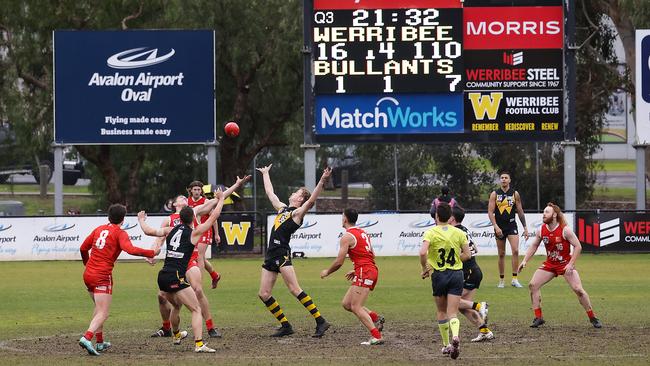
In 2021-22 the average amount spent on pokies per adult in Moreland was $290. It was $397 in Wyndham, which has a daily spend of $240,000 ($87.5 million annually).
Werribee pounced on 75 pokies machines in 2010.
“We could not be in the VFL competition and compete against the likes of Collingwood and Geelong unless we had that sort of income,” Penaluna said at the time.
“The city requires a club like ours to support the kids of the area. If we weren’t successful, then we would not be competing in the VFL.”
Wyndham Council has repeatedly opposed Werribee’s applications for pokies.
In 2021 it was club versus council in front of the Victorian Commission for Gambling and Liquor Regulation with Werribee’s bid for 70 pokies at Club Tarneit at stake.
Penaluna submitted nine letters from the likes of AFL Victoria, Tim Pallas MP, the Salvation Army, the WRFL, Truganina Thunder, Soujourners Church and Mercy Health Foundation.
They were all glowing of Penaluna and Werribee’s dedicated community work, but only one endorsed the pokies application.
It might’ve been women’s footy that set the jackpot off.
Part of the 52-page document on the hearing said: “The commission finds that the applicant would be significantly more likely to establish a VFL women’s team in the event the application was granted. This is seen as a significant social benefit associated with the approval of the application.”
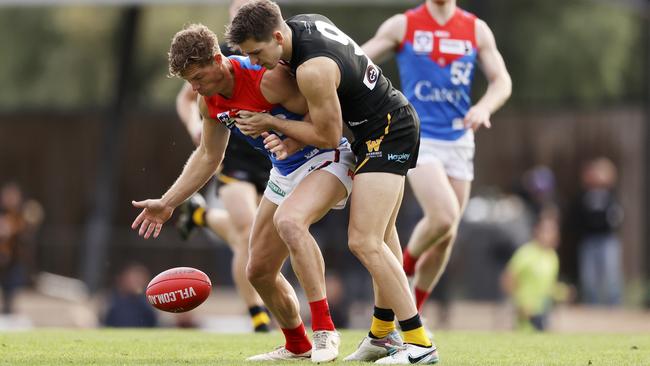
Club Tarneit and its 70 pokies got the green light. And as AFL clubs get out of gaming, the VFL will dive further in.
North Melbourne exited in 2008 while Collingwood, Geelong. Hawthorn, Melbourne and Western Bulldogs have all divested.
AFL chairman Richard Goyder said he “hates” pokies. But last week the league absolved itself from the VFL pokies debate by saying it was a matter for clubs.
Southport’s website promises gamblers complimentary tea and coffee, exceptional service and machines in premium condition.
From 2016-18 the Sharks’ 300 machines drained $60 million from punters who were offered free tea.
Port Melbourne purchased 57 pokies entitlements for $1.6 million in 2010 and renewed them last year for $2.29 million.
The Borough banked $5.13 million revenue from gaming room and TAB income at Bay St’s Rex Hotel in 2021-2022.
In the past 18 months Williamstown has raked in $9.3 million from 66 machines at its Seagulls Nest Club at Newport Social.
Now Williamstown has a future fund managed by JB Were that was projected to have $5 million by now “as we plan to be around in another 157 years”.
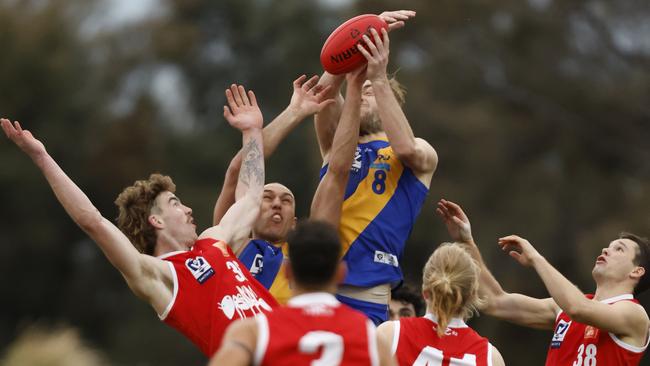
But when Frankston turned to pokies it was game over.
The machines required $150 a day to break-even and in 2016 the Dolphins dumped all 27 to stop the bleeding.
They were left in $1 million debt and without a licence to play in 2017.
Coburg considered pokies in the 1980s, but it never eventuated.
Now the club’s annual general meetings have served as a call to arms for a club under loan stress and locked in survival mode.
AGM extracts include: “If we don’t get that support both financially and physically, this club could be under siege”.
“The Frankston and North Ballarat financial issues should be a real wake-up call.”
“It is important for the viability of this great club that the workload be shared and finances are drastically improved.”
Last year Coburg said: “The focus will be on getting 10 x $5000 sponsors rather than trying to get 1 x $50,000 sponsor”.
VFL followers are hoping incoming AFL chief executive Andrew Dillon will be their grassroots white knight.

There might be 410 years of history at stake.
Coburg was formed in 1891, entered the VFA in 1925 and won flags in 1926, 1927 and 1928.
Frankston was born in 1877 and produced AFL players Matthew Boyd, Michael Hibberd, Mark Baguley, Nic Newman and Sam Lloyd this century.
The Bullants, home of Collingwood captain Ray Shaw and Hawthorn premiership coach Alan Joyce, have also been around forever.
“142 years to be precise,” Malkoun said.
“We’re one of the oldest institutions in Victoria, believe it or not.
“Coburg share a similar history to us at Preston.
“Two proud clubs, two prominent clubs, two big brands and it would be a shame to see either entity fold away into a different comp of sorts.
“That’s a fair way off, but these days, good lord, you can never say never to anything, really.
“You’ve got to be open and susceptible to change and be ready to act in a heartbeat to protect what you can protect.”



